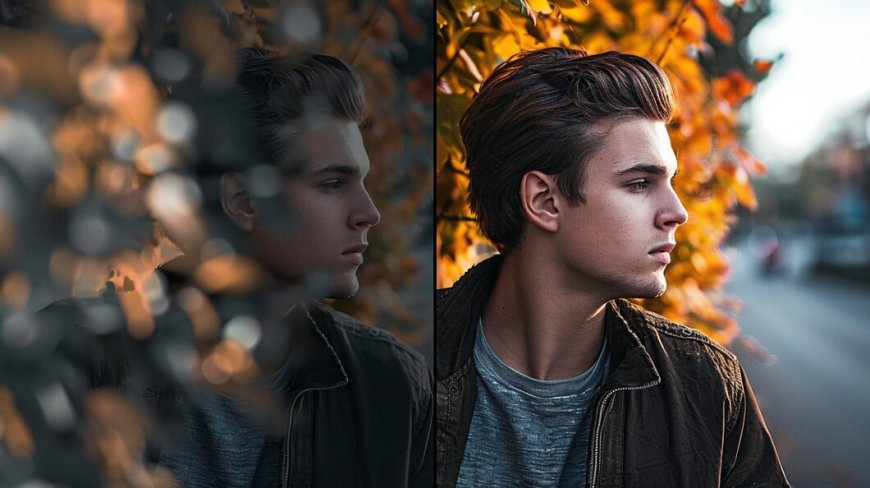What are the Pros of Photograph Filters?
In this article, we will explore some great benefits of photograph filters that can really help you improve your images or make them more appealing.
Photography has come a long way since we had to wait for a picture to develop and print. Now we also have a wide array of filters that we can apply to make the photo more appealing. A filter is a tool used by photographers to add effects or to improve their images, particularly in creative photography.
However, filters can sometimes spoil a photograph by degrading the quality of the image, altering the colors, or improperly reflecting the texture of the picture. Filters for photography are strong instruments that can elevate your photos. Filters provide a variety of advantages for photographers of all skill levels, from boosting colors and managing light to adding artistic effects. Additionally, there are some Photo To Cartoon Picture Apps that can make photography a real fun experience.
In this article, we will explore some great benefits of photograph filters that can really help you improve your images or make them more appealing. Knowing the benefits of utilizing filters will help you to release your creativity and take amazing pictures whether you are shooting landscapes, portraits, or anything in between. So, let’s get started.
Top 5 Benefits of Using Photograph Filters
When we talk about the benefits of applying filters in photography, it can greatly enhance your photo and make it more appealing and eye-catching. Although the pros of adding filters are many, here we will look into some of the most prevalent benefits of photograph filters.
Utilizing filters can greatly enhance your landscape photography. A polarizing filter is one of the most widely used types of filters on the market today. Reflections on glass or water is lessened with polarizing filters. Additionally, they can enhance the contrast and bring back the original color saturation in your photos.
When taking pictures of forests, waterfalls, or other greenery, for instance, using a polarizer can help bring out more color in the foliage. By rotating the filter, you can adjust the polarization effect's intensity to get the desired result. It is preferable to aim your camera at the sun at around a 45-degree angle for the best results.
Filters are a useful tool for correctly capturing a scene. The main goal of employing a Neutral Density (ND) graded filter is to accurately capture the picture by minimizing the amount of light passing through the shaded gray portion of the filter and into the camera.
For landscape photography, ND-graded filters are extremely popular because they contribute to more balanced exposures. Even with today's excellent cameras, you will frequently discover that in high-contrast landscape situations, the foreground is either dark and underexposed or the sky is burnt out. This is where the Neutral Density (ND)-graded filter shines. This is the filter that can add appeal or beauty to your photo.
Adding motion to your photos with the use of photography filters is yet another fantastic benefit. Have you ever wished to add more movement to a scene that appeared to be static? Well, you can if you use a Neutral Density (ND) filter. An ND filter reduces the amount of light that enters the camera lens in order to function.
They are really simple to use, even if you have never used them before. The ND filter is easily inserted into a filter holder that is fastened to the camera lens. Then, it partially prevents light from entering the camera sensor, allowing you to use slower shutter speeds in bright daytime.
If you are out taking landscape photos, you might want to adjust the scene's color temperature. Color tones can be changed with no additional color cast by using specialized color temperature filters. To achieve precise color temperature corrections and help brighten or cool the white balance, think about utilizing photographic filters. Adding pink and red to a scene using coral filters is a terrific way to make it feel more relaxing.
The use of special effects filters in particular can greatly improve your photography and various image kinds. Special effect filters (such as infrared or black-and-white filters) are available that fit into your filter holder. The sunset and sunrise filters are additional filters that you may use to create amazing in-camera effects.
For sunrise and dawn, these offer warm hues. Another common kind of special effect filter is mist and fog. By properly placing the filter in the holder, they are used to simulate the effects of mist. In order to create minimalist compositions, you can also use these filters to clean up photographs by removing distracting backgrounds.
Polarizers, graded and neutral density graduated filters, and special effects filters are popular filters, especially with landscape photographers. If you want to add color to your photos, control contrast changes, and add more dynamic movement to your shots—like with clouds or water—consider utilizing photography filters. Additionally, filters are an excellent addition to help preserve your lenses and even out exposures in areas with dramatically varying tones.













